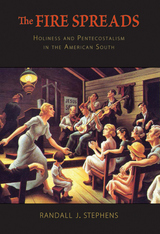
Today pentecostalism claims nearly 500 million followers worldwide. An early stronghold was the American South, where believers spoke in unknown tongues, worshipped in free-form churches, and broke down social barriers that had long divided traditional Protestants. Thriving denominations made their headquarters in the region and gathered white and black converts from the Texas plains to the Carolina low country.
Pentecostalism was, in fact, a religious import. It came to the South following the post-Civil War holiness revival, a northern-born crusade that emphasized sinlessness and religious empowerment. Adherents formed new churches in the Jim Crow South and held unconventional beliefs about authority, power, race, and gender. Such views set them at odds with other Christians in the region. By 1900 nearly all southern holiness folk abandoned mainline churches and adopted a pessimistic, apocalyptic theology. Signs of the last days, they thought, were all around them.
The faith first took root among anonymous religious zealots. It later claimed southern celebrities and innovators like televangelists Oral Roberts, Jimmy Swaggart, T. D. Jakes, and John Hagee; rock-and-roll icons Elvis Presley, Jerry Lee Lewis, and Little Richard; and, more recently, conservative political leaders such as John Ashcroft.
With the growth of southern pentecostal denominations and the rise of new, affluent congregants, the movement moved cautiously into the evangelical mainstream. By the 1980s the once-apolitical faith looked entirely different. Many still watched and waited for spectacular signs of the end. Yet a growing number did so as active political conservatives.

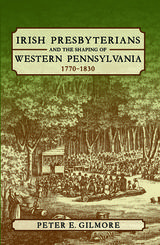
Rural Presbyterian Irish church elders emphasized community and ethnoreligious group solidarity in supervising congregants’ morality. Improved transportation and the greater reach of the market eliminated near-subsistence local economies and hastened the demise of religious traditions brought from Ireland. Gilmore contends that ritual and daily religious practice, as understood and carried out by migrant generations, were abandoned or altered by American-born generations in the context of major economic change.
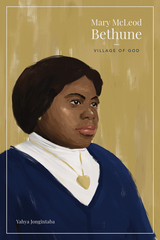
Mary McLeod Bethune was born on May 10, 1875, in a log cabin in rural Sumter County, South Carolina. She was the fifteenth child among seventeen siblings but the first born free of the bonds of slavery. As a child she attended a Presbyterian mission school in nearby Mayesville and Scotia Seminary in Concord, North Carolina. After some years at Scotia she was admitted in 1894 to the Moody Bible Institute in Chicago. Her two years of training at Moody did not lead to missionary work in Africa, as she had dreamed, but to missionlike teaching positions in the South and eventually her founding, in 1904, of the Daytona Normal and Industrial Institute for Girls, in Daytona Beach, Florida. That institution would grow to the present-day Bethune-Cookman University.
In this religious biography, author Yahya Jongintaba traces Bethune’s life of service in lively prose, structuring his book in a five-part framework that organizes his subject’s life in parallel with the Lord’s Prayer and virtues identified by Bethune herself: freedom, creativity, integrity, discipline, and love. With unfettered access to Bethune’s personal archive, Jongintaba paints a picture of a mother figure and mentor to generations, a nearsaint who lived “a blameless life for four-score years.” With deep empathy and the kind of “spiritual understanding” that Bethune had despaired of finding in a biographer in her own lifetime (despite attempts by publishers and herself to find just the right person), Jongintaba endeavors to achieve in his biography what Bethune wrote that she hoped to accomplish in an autobiography that never materialized: to “give to the world the real Mary McLeod Bethune’s life as I have lived it.”
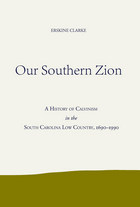
An exploration of the ways a particular religious tradition and a distinct social context have interacted over a 300-year period, including the unique story of the oldest and largest African American Calvinist community in America
The South Carolina low country has long been regarded—not only in popular imagination and paperback novels but also by respected scholars—as a region dominated by what earlier historians called “a cavalier spirit” and by what later historians have simply described as “a wholehearted devotion to amusement and the neglect of religion and intellectual pursuits.” Such images of the low country have been powerful interpreters of the region because they have had some foundation in social and cultural realities. It is a thesis of this study, however, that there has been a strong Calvinist community in the Carolina low country since its establishment as a British colony and that this community (including in its membership both whites and after the 1740s significant numbers of African Americans) contradicts many of the images of the "received version" of the region. Rather than a devotion to amusement and a neglect of religion and intellectual interests, this community has been marked throughout most of its history by its disciplined religious life, its intellectual pursuits, and its work ethic.

This book deals with the history of the particular American religious sect which, because of its large and varied membership, its intellectual vigor, and the part played by its clergy in shaping public thought, affords the richest field for a study of the influence of religious organizations upon American life.
The story of the struggle of the Old School Presbyterian leaders to choose between their desire to avoid a break in their church and their feeling that it was their duty to voice their loyalty to the Union forms an interesting and illuminating commentary on the problems of the troublous times of the War of the Rebellion. The minor Presbyterian groups played varying parts, but always occupied more than their proportionate share of public attention because each met its own problems with a characteristically Presbyterian individuality.
Professor Vander Velde’s monograph is important not only for American religious history but also for the fact that it illustrates how closely Church and State were related during the Civil War period.
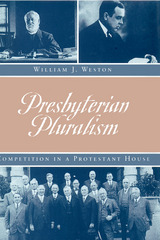
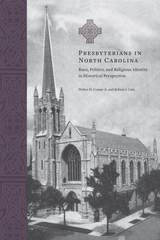
This volume is the first comprehensive overview of North Carolina Presbyterians to appear in more than a hundred years. Drawing on congregational and administrative histories, personal memoirs, and recent scholarship—while paying close attention to the relevant social, political, and religious contexts of the state and region—Walter Conser and Robert Cain go beyond older approaches to denominational history by focusing on the identity and meaning of the Presbyterian experience in the Old North State from the seventeenth through the twentieth centuries.
Conser and Cain explore issues as diverse as institutional development and worship experience; the patterns and influence of race, ethnicity, and gender; and involvement in education and social justice campaigns. In part 1 of the book, “Beginnings,” they trace the entrance of Presbyterians—who were legally considered dissenters throughout the colonial period—into the eastern, central, and western sections of the state. The authors show how the Piedmont became the nexus of Presbyterian organizational development and examine the ways in which political movements, including campaigns for American independence, deeply engaged Presbyterians, as did the incandescence of revivalism and agitation for reform, which extended into the antebellum period.
The book’s second section, “Conflict, Renewal, and Reunion,” investigates the denominational tensions provoked by the slavery debate and the havoc of the Civil War, the soul searching that accompanied Confederate defeat, and the rebuilding efforts that came during the New South era. Such important factors as the changing roles of women in the church and the decline of Jim Crow helped pave the way for the eventual reunion of the northern and southern branches of mainline Presbyterianism. By the arrival of the new millennium, Presbyterians in North Carolina were prepared to meet future challenges with renewed confidence.
A model for modern denominational history, this book is an astute and sensitive portrayal of a prominent Protestant denomination in a southern context.
Walter H. Conser Jr. is professor of religion and professor of history at the University of North Carolina, Wilmington. His books include A Coat of Many Colors: Religion and Society along the Cape Fear River of North Carolina and God and the Natural World: Religion and Science in the Natural World.
Before his retirement after thirty-two years of service, Robert J. Cain was head of the Colonial Records Branch at the North Carolina State Archives. He is the editor of The Colonial Records of North Carolina, second series.
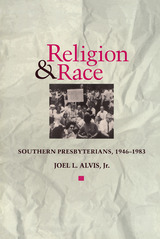
Joel Alvis focuses on the relationships and tensions in the Presbyterian Church, U.S., whose ecclesiastical boundaries never expanded significantly beyond its original territory in the Confederacy and border South. By the time of the civil rights movement, the church was actively involved in ecumenical activities despite its regional isolation, and that involvement created unease in some quarters of the denomination. This concise institutional history traces how the church shaped and was shaped by its regional culture and explores the denomination's own cultural struggle to determine what role race issues would play in the definition of being Presbyterian.
READERS
Browse our collection.
PUBLISHERS
See BiblioVault's publisher services.
STUDENT SERVICES
Files for college accessibility offices.
UChicago Accessibility Resources
home | accessibility | search | about | contact us
BiblioVault ® 2001 - 2024
The University of Chicago Press









